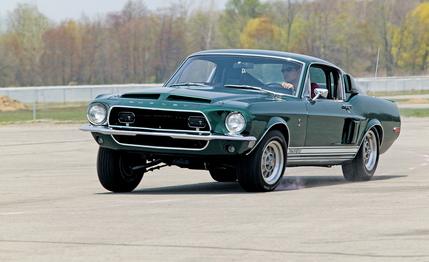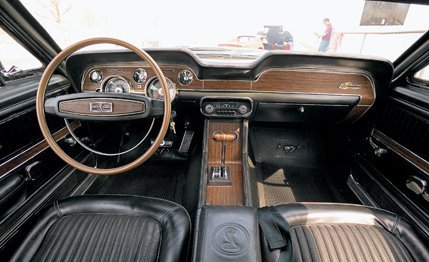
 Archived Comparison
Archived Comparison
Yes, yes, we know—we wouldn’t have compared a Corvette with a Mustang back in 1968, because the Ford’s primary rival was the Chevrolet Camaro. But we thought it would be fun to see how the antecedents of the current Corvette and GT500 shaped up.
The two most charismatic cars from Ford and Chevy have retained much of their ’60s DNA. Today, the Corvette is a relatively sophisticated two-place sports car with a honking big V-8 up front, a car that provides lots of performance and style for the money. Back in 1968, the Corvette did the self-same thing. The big difference, one could argue, is that today’s car looks a little tame, whereas Bill Mitchell’s styling was sexier than anything the Europeans could manage this side of a Lamborghini Miura.
The ’68 GT500KR, like the newest GT500, was the ultimate Ford pony car, sporting a big bad V-8 and scoops and spoilers aplenty. Unlike the Corvette, the old car doesn’t look that dissimilar from its modern counterpart, which slavishly apes the ’68 Mustang’s iconic styling. Then as now, the Ford is a relatively crude device, the KR having a live rear axle compared with the Corvette’s independent rear suspension and rear drums as opposed to all-around disc brakes.


Our GT500KR was supplied by Chris and Karen Burkhart, who are the third owners of this 41,000-mile example. The panel work and the interior are totally original, but the Highland Green color has been reapplied and Burkhart has fitted more modern BFGoodrich Radial T/A tires, a hotter cam, and a freer-flowing exhaust in his 28-year ownership.
The KR—for “King of the Road”—was a development of the ’68 GT500, with the so-called Cobra Jet 428-cubic-inch engine in place of the Police Interceptor unit. The GT500 was nominally rated at 360 horsepower, whereas the KR was down to 335. “This was done for insurance purposes,” says Chris Burkart. “Everyone knew that was a joke and the real number was somewhere slightly north of 400 horsepower, with 440 pound-feet of torque.” Compared with a stock ’68 Mustang, the GT500 gained a plethora of scoops and vents, a fiberglass hood and trunklid, a front-strut brace, wider rear brake drums and shoes, an 8000-rpm tach, a 140-mph speedometer, and a rollover bar. The heavy-duty Mustang suspension, as well as power brakes and steering, were standard on all GT500s.
Before we tested the car at nearby Michigan Dragway, Burkhart was frank about the car’s strengths. “It’s a green-light car. It’s good in a straight line, and that’s about it.” He’s right about the straight-line part. Burkhart advised test driver Dave VanderWerp to leave the selector for the three-speed automatic transmission in D, “put your foot on the brakes, keep the rpm up, and hope for the best.” The best was a strong 13.9-second quarter-mile, a 0-to-60 in 5.4 seconds, and a 30-to-50 mph acceleration that’s comparable with that of some AMG Mercedes.